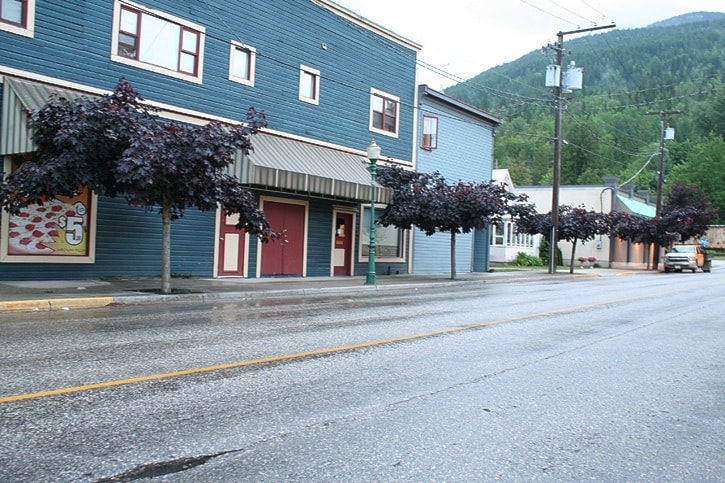Why do city crews have to chop down lovely cultivar trees in downtown Revelstoke every year? The trees are not that old and not all of them are diseased. What's going on?
On the eve of a mass tree removal, Revelstoke city council sought to explain why things are being done the way they are. BC Hydro will cut down a series of Crimson King maples and other trees on Connaught Avenue between Victoria Road and Second Street West this week.
It wasn't a plea for a stay of execution, but Revelstoke city councillor Chris Johnston brought forward concerns from the city's environmental advisory committee about tree removal issues at council's June 12 meeting.
The environmental advisory committee has been pushing for changes and better communication around tree removal, Johnston said. Can the city remove a few trees at a time instead of mowing down a whole block at once? What's the policy regarding replacing them with more appropriate trees? How about replacing them right away, instead of waiting for months or years? What about improved communication?
The answers from city public works operations manager Darren Komonoski revealed that city staff are dealing with the fallout of some poor silviculture decisions made about 20 years ago.
He used the term 'downtown revite' trees. Many of the trees – such as the dark-red Crimson King maples and Lindens – were planted during the downtown Revelstoke revitalization drive in the early late '80s and early '90s.
Komonoski said the maple trees are "the wrong species" for the location. They can grow to be more than 20 metres (70 feet) tall. Pruning them is costly and not effective; the species shoots up suckers when trimmed, which can grow up to three metres a year.
Komonoski said the trees on Connaught Avenue are a case in point. Hydro gave many of them a close buzz cut recently to keep them away from overhead power lines. Now, they've become a "maintenance tree" for the city.
Coun. Johnston wondered if something was being done to make better tree selection decisions: "When are we going to stop hearing, 'We planted the wrong tree?'" he asked.
"You will hear us say that for many years to come," Komonoski replied. City crews continue to take out and replace trees each year but there's always more to do as the 20–25-year-old 'revite' trees reach the size where they heave up sidewalks, rub against awnings, mess with foundations, interfere with sewers and come dangerously close to power lines.
The city is replacing the trees with more appropriate species – slower growing, less maintenance and a more manageable size. Komonoski mentioned Persian Ironwoods as one species. In the meantime, city crews will continue to deal with decisions made over 20 years ago.
Why doesn't the city remove the trees selectively to minimize visual impact? The answer, Komonoski said, is money.
BC Hydro is happy to remove trees that are coming into conflict with power lines. They cover the costs of cutting, grinding and removing them – and even pay for a new, farmed tree that has a trunk already about 8-centimetres in diameter. The trees already look good and have an "instant impact," Komonoski said.
The catch is BC Hydro crews do the removal largely on their own terms. They're not interested in taking one here, one there. The crew shows up with their work orders and remove them all. How much notice do they give? "Sometimes very little, sometimes two weeks," Komonoski said. "Sometimes none."
So, in the case of the maples coming down this week on Connaught Avenue, it is BC Hydro removing them. The city could have opted to keep them and maintain them but city taxpayers would have to pay for it. New trees will be planted on Connaught in the fall. Hydro will buy the trees, but the city has to install them.
So, what did council opt to do about the ongoing communication issues? They asked the public works department to put together a five-year plan for tree removal. The main point of the plan is to communicate with stakeholders and the public about why the trees are being removed and provide a road map for the coming years.
In response to questions from the Times Review, mayor David Raven (a retired forester) said the city was also dealing with a philosophical shift in the community.
"There's a bad joke amongst foresters" Raven said. "You get to look at your mistakes for the rest of your life." In his opinion, the species selection at the time of the downtown revitalization drive was not good, but that is also tempered by a change in philosophy.
Back then, chopping down trees once they got too big and just replacing them was viewed as an efficient way of doing things. Nowadays, there's an uproar when the trees are chopped down.
"Is it the wrong tree if you're OK with taking it out?" Raven asked.
***
Tree removal is always controversial. What do you think of the plans? Do you have any suggestions for city council or staff?
